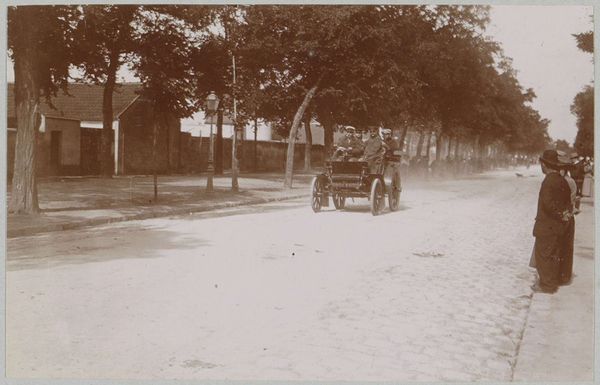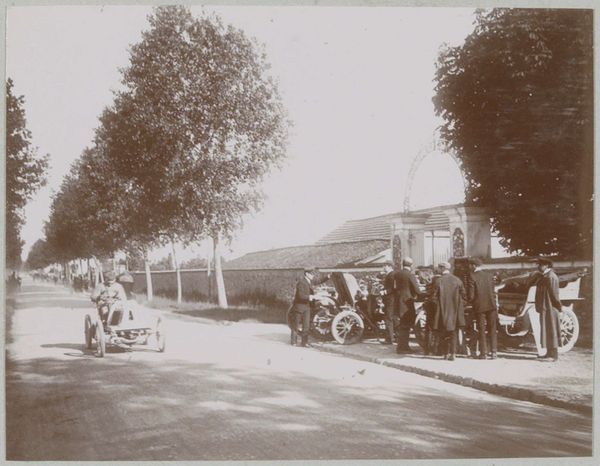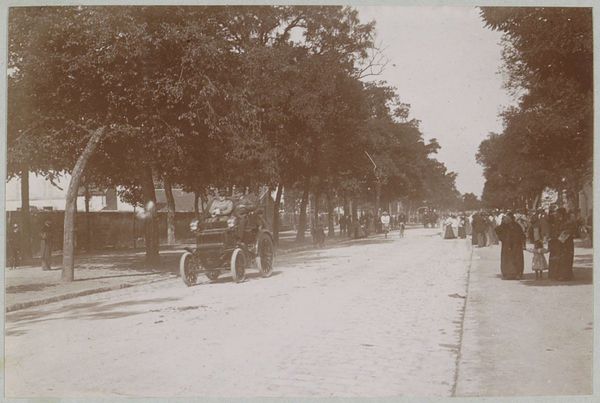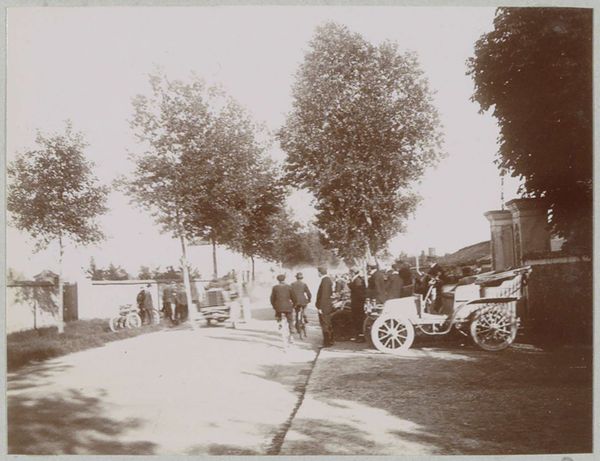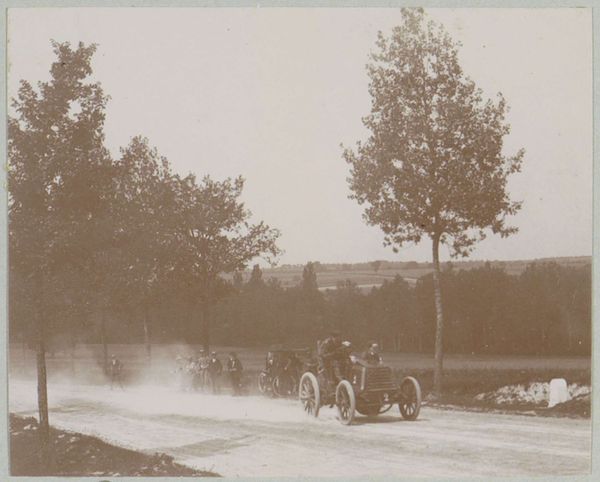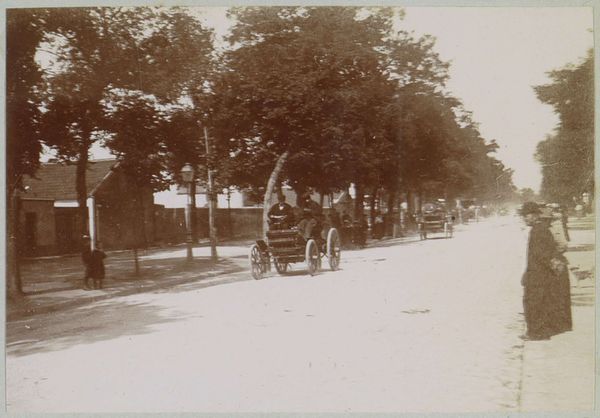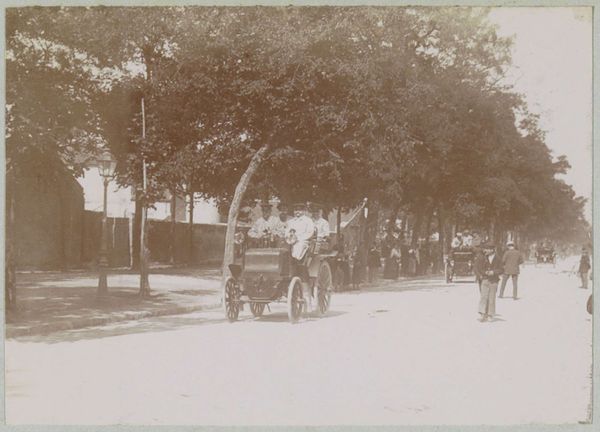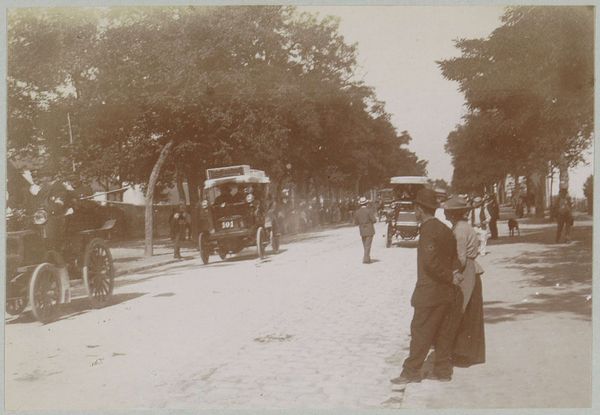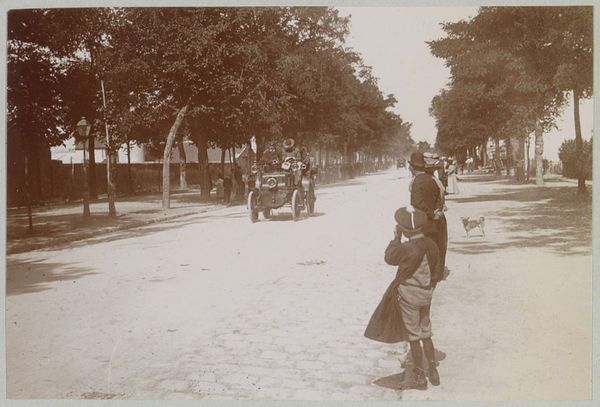
Autocoureur Jamin, deelnemer aan de Tour de France voor automobielen, op een landweg in Vitry-le-François Possibly 1899
0:00
0:00
delizy
Rijksmuseum
plein-air, photography
#
pictorialism
#
plein-air
#
landscape
#
street-photography
#
photography
#
realism
Dimensions: height 56 mm, width 73 mm
Copyright: Rijks Museum: Open Domain
Editor: This photograph, “Autocoureur Jamin, deelnemer aan de Tour de France voor automobielen, op een landweg in Vitry-le-François,” taken around 1899 and held at the Rijksmuseum, depicts a car on a dirt road lined with trees. The sepia tone gives it a very nostalgic feel. What strikes me is how much slower and simpler this looks compared to modern racing! What do you see in it? Curator: It’s easy to romanticize the early days of motorsport, but your first reaction does touch upon something. The image serves as a valuable social document, capturing the dawn of the automotive age and its integration into the French landscape. The ‘Tour de France for automobiles’ was not just a sporting event; it was a public spectacle. We see the infrastructure of the early automobile industry, including roadways, technology, and the enthusiastic participants in what would become an influential cultural and economic force. How does this “integration” play out in your reading of the composition and style? Editor: Well, it feels like the car is placed *within* the landscape. The soft focus of Pictorialism emphasizes atmosphere rather than pure mechanics; it blends in. A modern shot might highlight the car's speed and separateness from nature. Curator: Precisely. The artistic choice of Pictorialism softened the image of this "new technology", possibly to integrate the public acceptance of a world rapidly being influenced and transformed. Does this make you reflect on street photography today, with its quick, detailed captures? Editor: Definitely. It makes me consider the photographer's intention – they're capturing more than just a car; they’re showing how society is absorbing this new technology. It has broader applications beyond this specific race and moment in history. Curator: Exactly, and through studying images like this we start to appreciate the societal relationship to technological change throughout different periods. Editor: It's fascinating to think about how art can be used to ease societal transitions. Curator: Indeed, looking through a historical lens reveals the multifaceted dialogue between art, technology, and culture.
Comments
No comments
Be the first to comment and join the conversation on the ultimate creative platform.



